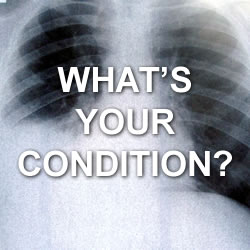Bionics
There will come a time when a person has a stroke and if we can’t repair it biologically, there will be an option to get a technology that will rewire their brain - John Donoghue

image by: StarWarsRey
HWN Recommends
The Insane and Exciting Future of the Bionic Body
Although multiple artificial organs can’t yet function together in a single human body, the scenario has become realistic enough that bioethicists, theologians and others are contending with the question, How much of a human being can be replaced and still be considered human? For many, the criterion is whether a device enhances or interferes with a patient’s ability to relate to other people.
There’s broad agreement, for instance, that technology that restores motor functions to a stroke victim or provides sight to the blind does not make a person less human.
But what about technology that could one day transform the brain…
Resources
 Beyond human: 8 organisations making bionic breakthroughs
Beyond human: 8 organisations making bionic breakthroughs
e're only human. We age, we get injured, some of us suffer from chronic conditions and many of us get hurt in accidents. But wouldn't it be great if we didn't, or at least the consequences of such accidents and misfortune weren't so grave? That's where bionics is taking us.
 Teaching With: ‘The Bionic Man’
Teaching With: ‘The Bionic Man’
This short documentary, The Bionic Man, is the third episode in a Bits video series called Robotica, examining how robots are poised to change the way we do business and conduct our daily lives. The film features Les Baugh, who lost his arms as a teenager. Engineers at Johns Hopkins are trying to give them back, but better. Mr. Baugh is testing a robotic prosthetic that he can control with his mind.
 Want a True Bionic Limb? Good Luck Without Machine Learning
Want a True Bionic Limb? Good Luck Without Machine Learning
Neural control is not yet ready for prime time, but computer vision is already making existing artificial arms significantly more agile—up to 10 times faster than anything on the market.
 Will Exoskeletons Give Us Superpowers?
Will Exoskeletons Give Us Superpowers?
All the strength of a body builder, with none of the body oil. We test out the latest bionic enhancements in the first episode of FLUX.
A Bionic Limb You Can Control With Your Unconscious Mind Is Here
Ossur's "mind controlled" prosthetic converts unconscious reflexes into limb-like movements.
Bionic Bodies: Why the Future for Quadriplegics Looks So Bright
The ultimate goal is to build a robotic vest for the whole body. A person's brain activity will control movement of the limbs.
Bionic body parts: what's already here (eyes!) and what's coming soon
It may soon become commonplace to see people with robotic exoskeletons or bionic eyes. Scientific research into bionic human parts has advanced impressively in recent years, driven by improvements in computer science, shrinking electronic components, and a growing understanding of the nervous system.
Bionic Brains and Beyond
High-tech implants will soon be commonplace enhancements under our skin and inside our skulls, making us stronger and smarter.
Bionics to Track Your Health
Imagine a digital tattoo that transmits skin temperature; a transparent sensor on a contact lens that tests for glaucoma; a pliable pacemaker wrapped around a beating heart; and an implant that controls pain after surgery, then dissolves harmlessly when it is no longer needed.
From Legos To The Iron Man Suit And Now Mr. Bionics: Meet Jay Martin
Martin Bionics is a prosthetics company that is completely changing how prosthetics are made, fit and used. Instead of a rigid carbon fiber or plastic joint socket, Jay and his team created a fabric-based socket. Not only is the fabric socket more comfortable, it is user friendly for practitioners and patients alike.
How bionic technology will change what it means to be human
Scientists have been making amazing advances in bionic technology in recent years: robotic exoskeletons that help people walk, artificial eyes that help blind people see. Some of these technologies are meant as medical aids to help people regain function. But some of this research — by, say, the military — is meant to help give people superhuman capabilities.
Now Is The Time For Robotics
As a company that has been “fighting the good fight,” pioneering the practical application and commercialization of exoskeleton technology for many years now, we applaud what the Walk Again Project has undertaken. They are shooting for the moon with the conviction that at some point you just have to aim high in the name of progress toward a better tomorrow. They seek to demonstrate the feasibility of using a brain machine interface to control human exoskeletons.
This Bionic Hand Uses AI to Grab Things Automatically
Most moveable prosthetic limbs require some human control, transmitted through devices like implanted myoelectric sensors, to react to their environment—translating the movement to a cyborg appendage. What if the hand could see for itself, instead?
 The Insane and Exciting Future of the Bionic Body
The Insane and Exciting Future of the Bionic Body
From “i-limbs” to artificial organs, advances in technology have led to an explosion of innovation in the increasingly critical field of prosthetics.
Advanced Bionics
Advanced Bionics is a global leader in developing the most advanced cochlear implant systems in the world. Acquired by Sonova Holding AG and working with Phonak since 2009, AB develops cutting-edge cochlear implant technology that restores hearing to those with severe-to-profound hearing loss.
Cyborgology
We live in a cyborg society. Technology has infiltrated the most fundamental aspects of our lives: social organization, the body, even our self-concepts. This blog chronicles our new, augmented reality.
Ekso Bionics
Today, Ekso Bionics® (EKSO) is a worldwide pioneer in the field of robotic exoskeletons.
Limbitless Solutions
We are Limbitless: A non-profit organization dedicated to providing children with 3D-printed bionic limbs at affordable costs.

Introducing Stitches!
Your Path to Meaningful Connections in the World of Health and Medicine
Connect, Collaborate, and Engage!
Coming Soon - Stitches, the innovative chat app from the creators of HWN. Join meaningful conversations on health and medical topics. Share text, images, and videos seamlessly. Connect directly within HWN's topic pages and articles.













